STRaND-1 04-08-2013 18:03 UTC
Here is an image from the orbit that STRaND-1 had during this pass. AOS was in the North-East and LOS almost due South. I am puzzled why STRaND-1 is sometimes much stronger when switching to LHCP. This was such a pass and in the images below you can see the difference.
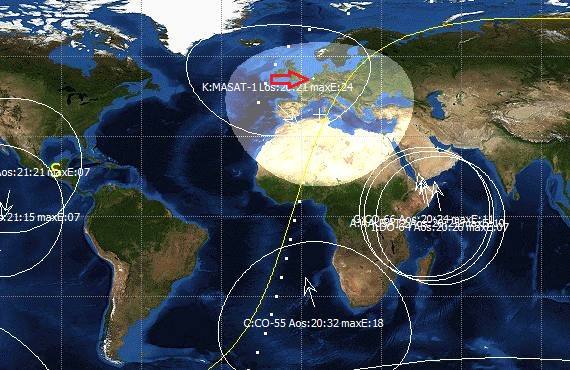
Date and Time: 04-08-2013 18:03 - 18:17 UTC Object : STRAND 1 Max elevation: 54 degree Azimuth : 018 - 184 degree Polarization : LHCP Strongest Signal : max 30 dB above noise Frequency : 437.568000 MHz FM +/- doppler Status : Active Remark : LHCP much stronger then RHCP, 518 Frames
Kiss file: STRaND-1_04082013_1754.kss
Signal difference between LHCP and RHCP in the beginning of the pass. You can see the difference when I switch between LHCP and RHCP.
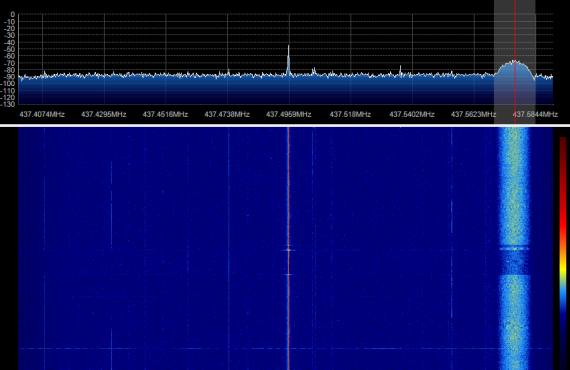
Further in the pass and closer as you can see in the signal strength. And again a big difference in signal strength when switching between LHCP and RHCP.
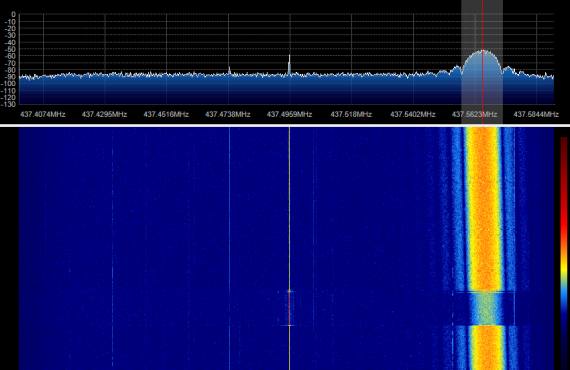
The last image, is the decoded data from the frames that I received during this pass. It looks that the solar panels on the +Y array are producing the largest amount of power. Does this tell something about the fact that signals are stronger when using LHCP.


 Dr. Chris Bridges (M0GKK) has requested that the ground stations that receive STRaND-1 telemetry to send there .kss files to strand.messages [at] gmail.com
Dr. Chris Bridges (M0GKK) has requested that the ground stations that receive STRaND-1 telemetry to send there .kss files to strand.messages [at] gmail.com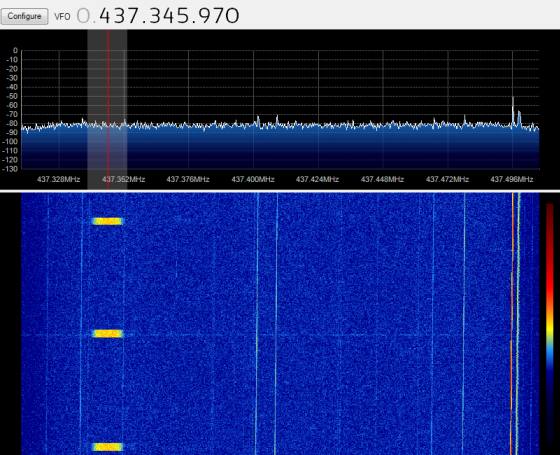
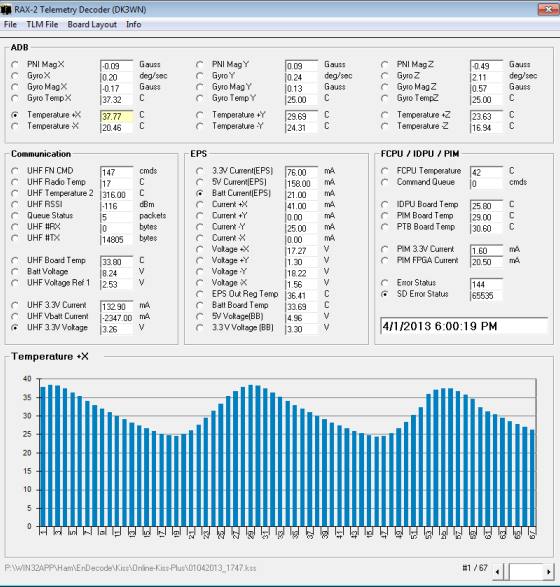

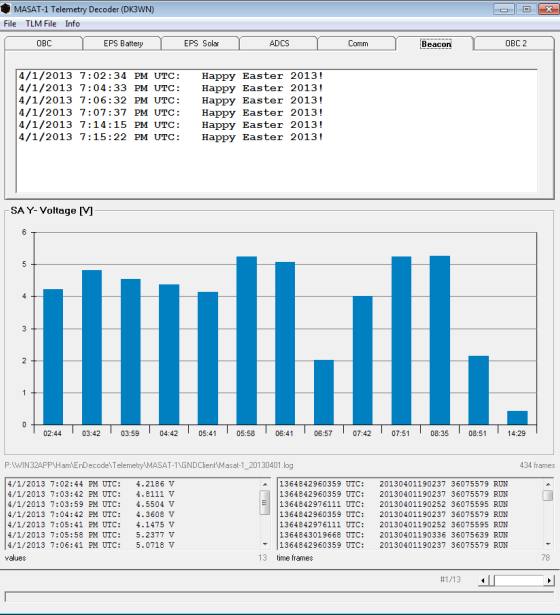
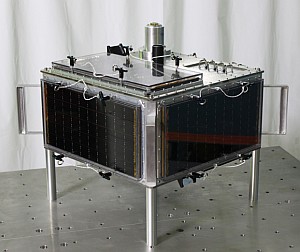 Now that the submissions are complete for the Chicken Little Contest, AMSAT is announcing a new contest: Catch the Last ARISSat-1 Telemetry. With luck, we will have real time data to go along with the final reentry. While telemetry sent by e-mail is valuable and requested, the contest will be judged solely on data sent through the official ARISSatTLM programs directly to the Internet telemetry server.
Now that the submissions are complete for the Chicken Little Contest, AMSAT is announcing a new contest: Catch the Last ARISSat-1 Telemetry. With luck, we will have real time data to go along with the final reentry. While telemetry sent by e-mail is valuable and requested, the contest will be judged solely on data sent through the official ARISSatTLM programs directly to the Internet telemetry server.